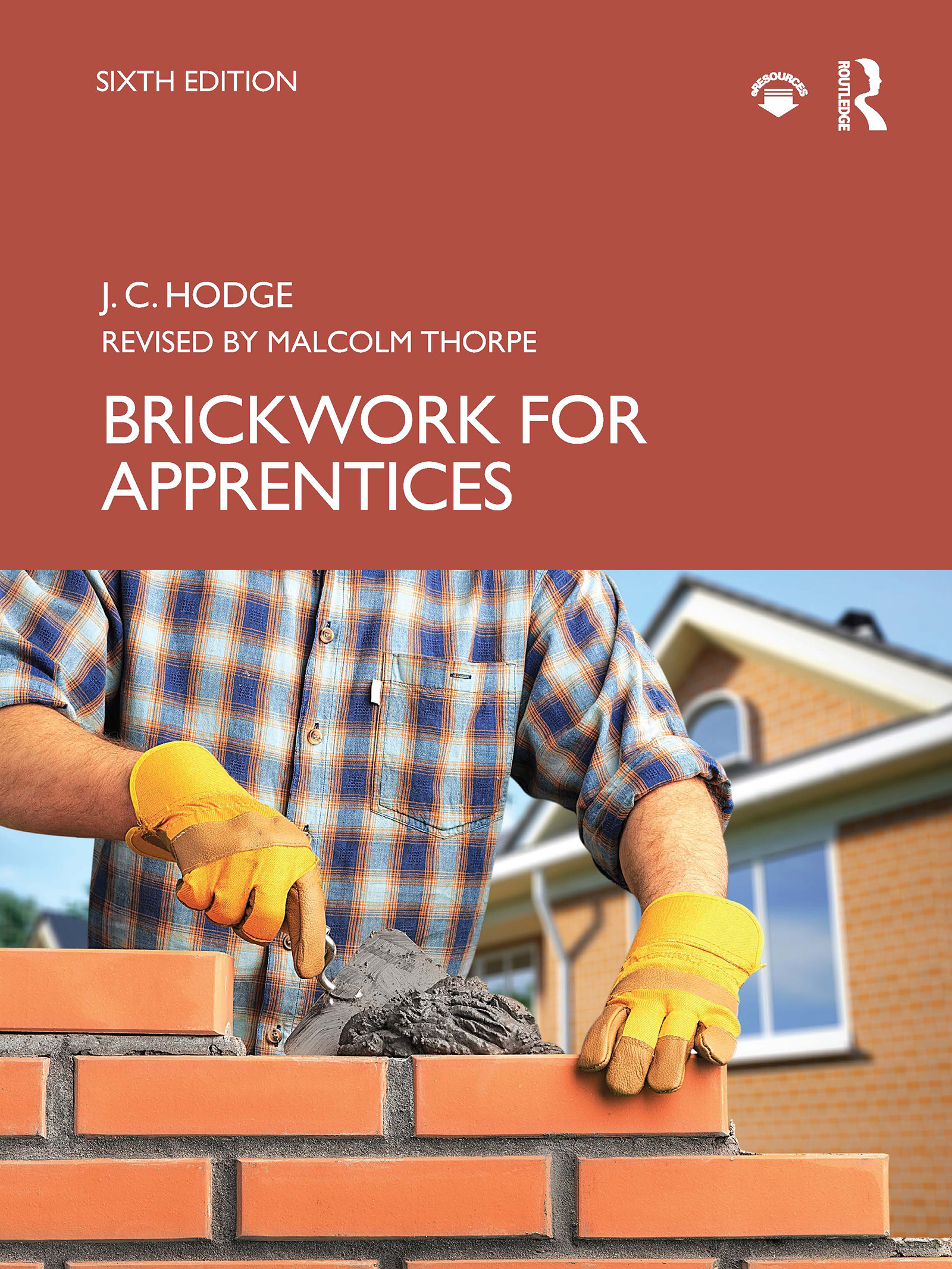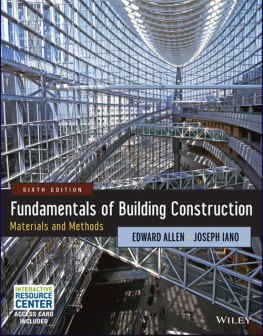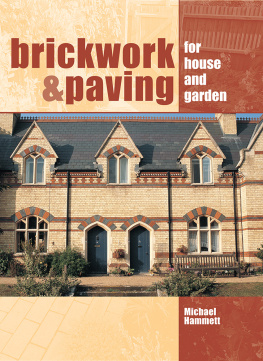
Table of Contents
Pages
Brickwork for Apprentices
Expanded and edited by Malcolm Thorpe, a former CITB Advisor, this latest edition incorporates all the latest industry-based requirements and technical developments in the construction industry. A new feature is the e-resource facility that includes multiple choice questions and answers, short oral questions and answers, and practical competency checks with marking schemes. These are all matched to current programmes, providing students with essential practice and revision for exam preparation.
A classic text, Brickwork for Apprentices has been the established reference on brickwork for generations of bricklayers. Continuously in print since 1944, John Hodges classic text has now been revised in its sixth edition and brought fully in line with the latest Building Regulations and requirements for City & Guilds courses.
This is an essential text for qualified bricklayers and other professionals working in construction, as well as students new to the industry and wishing to embark on a career in bricklaying.
The late J. C. Hodge was a Senior Lecturer at Metropolitan University, London, and Life Member and former President of the Guild of Bricklayers.
Malcolm Thorpe is a Life Member of the Guild of Bricklayers and former Head of Construction at West Nottinghamshire College, UK. He has acted as a CITB advisor and was involved in the draughting of bricklaying programmes. He was a verifier for CITB and spent several years producing examination material for examining bodies. He also spent over thirty years designing and organising Guild of Bricklayers Local and National bricklaying competitions.
Sixth edition published 2021
by Routledge
2 Park Square, Milton Park, Abingdon, Oxon, OX14 4RN
and by Routledge
52 Vanderbilt Avenue, New York, NY 10017
Routledge is an imprint of the Taylor & Francis Group, an informa business
2021 Malcolm Thorpe, R.J Baldwin and the estate of J.C. Hodge.
The right of Malcolm Thorpe, R.J Baldwin and the estate of J.C. Hodge to be identified as authors of this work has been asserted by them in accordance with sections 77 and 78 of the Copyright, Designs and Patents Act 1988.
All rights reserved. No part of this book may be reprinted or reproduced or utilised in any form or by any electronic, mechanical, or other means, now known or hereafter invented, including photocopying and recording, or in any information storage or retrieval system, without permission in writing from the publishers.
Trademark notice: Product or corporate names may be trademarks or registered trademarks, and are used only for identification and explanation without intent to infringe.
First edition published by Edward Arnold 1944
Fifth edition published by Routledge 2006
British Library Cataloguing-in-Publication Data
A catalogue record for this book is available from the British Library
Library of Congress Cataloging-in-Publication Data
A catalog record has been requested for this book
ISBN: 978-0-367-62432-3 (hbk)
ISBN: 978-0-367-62434-7 (pbk)
ISBN: 978-1-003-10944-0 (ebk)
Typeset in Times New Roman
by SPi Global, India
Visit the eResources: www.crcpress.com/9780367624323
Brickwork for Apprentices has been the basic reference book on brickwork for generations as a source of information for both students/trainees starting out in his/her chosen career or a trained bricklayer seeking guidance in a particular area of study.
It has been a honour and privilege to update this book for a sixth edition.
As technology advances with ever increasing speed it has been necessary to produce this sixth edition to attempt to keep pace with the ever changing programme of study required by todays students/trainees.
Some topic areas have been updated, extended or replaced, while others have been added.
Many of the topics covered are required for students/trainees to enable them to gain the knowledge and skills that an apprentice in brickwork will require.
But it is equally useful for those studying for other courses such as National and Higher National Certificates and GCSEs in construction.
The sixth edition contains 17 sections which offer a structured programme of training and information.
There is also the facility to access the e-resource on the Routledge website, which includes multiple choice questions and answers, short oral questions and answers and three examples of practical tests with marking sheets. It can be accessed here: www.routledge.com/9780367624323.
Malcolm Thorpe
Throughout the 1970s and 1980s there was great pressure for change in the way a craft skill is learned. Brickwork, along with other construction industry trades, has had its centuries-old tradition of Apprenticeship thoroughly examined.
There are three factors which have caused this re-examination of the Apprenticeship system, with a capital A:
A desire for retraining people who may wish to leave one industry and enter another.
A growing shortage of school leavers available and wanting to join construction trades throughout the 1980s, due to a falling birth rate 16 or so years earlier.
A general feeling that just because you missed the boat for vocational training when leaving school, you should not be denied the chance of learning a vocational occupation at any time in later life.
All this is far removed from the traditional arrangement of a school leaver joining a building company for a straightforward period of three or four years apprenticeship, with attendance at a local College of Technology, as the only way into the construction industry.
Very many patterns of vocational training have been proposed and tried, and continue to be developed at the present time.
ET schemes (Employment Training), in College and Training Centres for adult learners were the Government's response to change factors (i) and (iii) listed above.
Craft skills such as bricklaying, carpentry and plastering, which involve the use of tools and materials and require judgement of hand and eye, should not be confused with assembly processes. The knowledge and practice required to understand how to assemble metal partitions or false ceilings are far less demanding than the skills of setting, cutting, shaping and finishing the materials employed by the bricklayer, carpenter and plasterer.
Since 1964, the building and construction industrys lead-industry body responsible for developing change in training methods has been the Construction Industry Training Board (CITB). This body appreciated the difference between learning a craft skill in the one case, and becoming proficient at an assembly process in the second, by establishing separate Development Committees for the latter 'Specialist Subcontractors'.
Many operatives in the construction industry enjoyed a traditional Apprenticeship with a caring employer, where a training officer monitored site experience and also progress with further education at a college.
Other, less fortunate individuals rather 'endured' their Apprenticeship, which has given the expression time serving a somewhat hollow ring.
In recent years, the long-standing two-part C&GLI (City and Guilds of London Institute) Examinations of Craft and Advanced Craft Certificates based upon syllabuses of practical work and related technology have been phased out.
Traditional barriers to achieving a qualification such as length and method of training, where and when skills are acquired and the age of the student/trainee, have also been removed.











